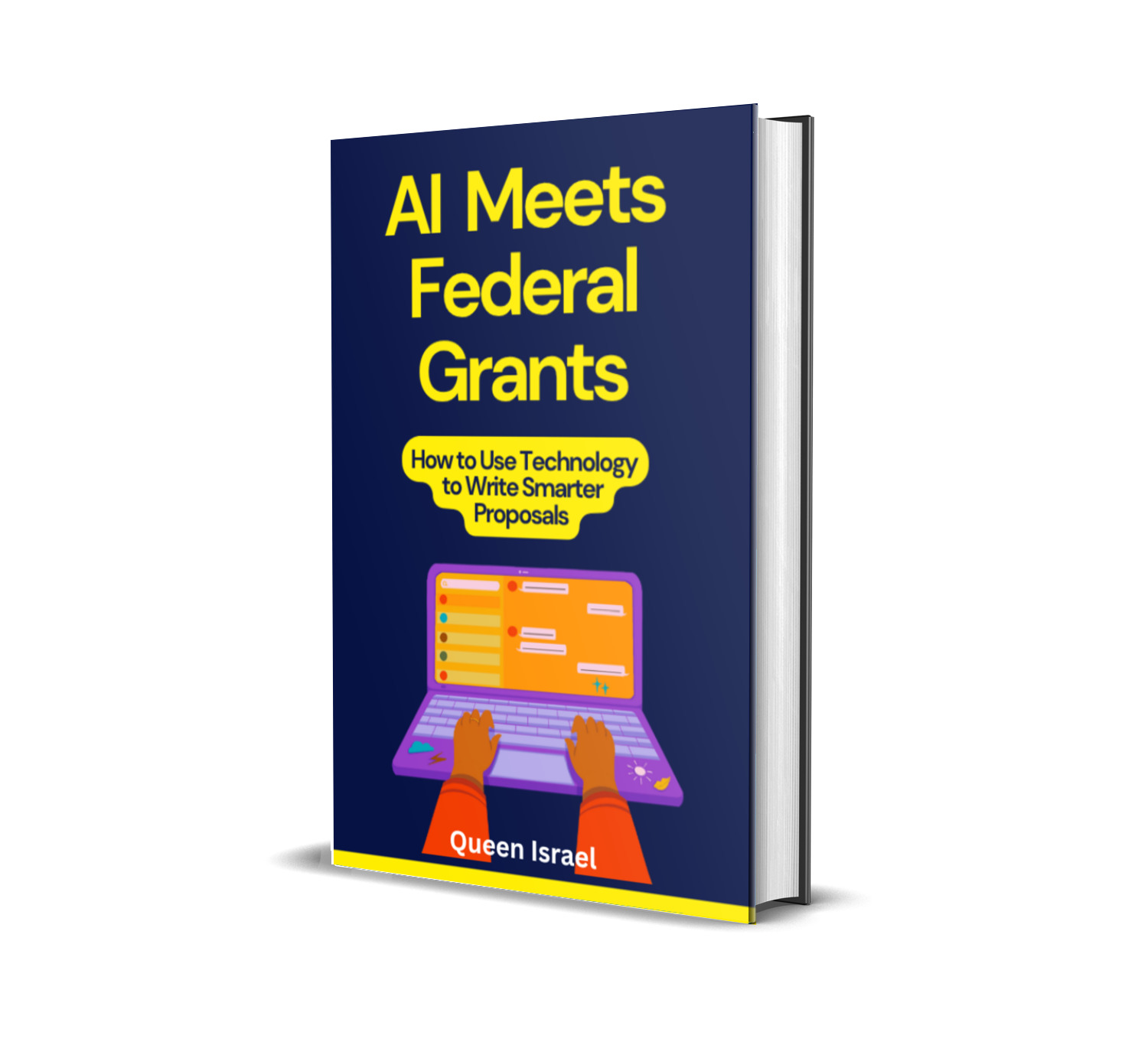Before diving into how to become a CDFI, it’s essential to understand what a CDFI is. The U.S. Department of the Treasury defines a Community Development Financial Institution (CDFI) as a specialized financial institution that provides affordable financial services to low-income, low-wealth, and other underserved communities. These services include lending for small businesses, affordable housing, and access to financial education.
CDFIs can take various forms, including community development banks, credit unions, loan funds, and venture capital funds. Their primary mission is to promote economic opportunity and community development by addressing gaps in traditional financial services.
Why Become a CDFI?
Becoming a CDFI offers numerous benefits that can enhance your institution’s impact and sustainability. Here are some compelling reasons to pursue CDFI certification:
1. Access to Funding and Support
As a CDFI, your institution becomes eligible for various forms of federal funding, including grants and low-interest loans from the CDFI Fund. According to the CDFI Fund, since its inception, it has provided over $14 billion in financial assistance to CDFIs, enabling them to expand their services and reach more underserved communities.
Additionally, private investors and philanthropic organizations often seek partnerships with CDFIs to support community development initiatives. This access to diverse funding sources can significantly enhance your institution’s financial stability and growth potential.
2. Strengthen Community Relationships
Becoming a CDFI helps strengthen the bond between your institution and the community it serves. By focusing on financial inclusion, you directly contribute to improving the lives of individuals and businesses that have been historically excluded from traditional banking services. This deepened relationship fosters trust and loyalty, essential components for long-term success.
3. Competitive Advantage
CDFI certification sets your institution apart from other financial entities. It showcases your commitment to social impact and positions you as a trusted partner for community development. This distinction can attract customers, investors, and partners who prioritize social responsibility and community engagement.
4. Enhanced Credibility and Trust
Certification as a CDFI enhances your institution’s credibility. It signals to stakeholders that you adhere to high standards of community development and financial stewardship. This increased trust can lead to more robust partnerships, customer loyalty, and a stronger reputation in the financial industry.
5. Impact Measurement and Reporting
CDFIs are often required to track and report their impact, providing valuable data that demonstrates the effectiveness of their programs. This emphasis on impact measurement helps institutions refine their strategies, improve services, and clearly communicate their contributions to community development.
How to Become a CDFI: A Step-by-Step Process
Now that you understand the benefits of becoming a CDFI, let’s explore the step-by-step process to achieve this certification.
Step 1: Understand the Eligibility Criteria
To become a CDFI, your financial institution must meet specific eligibility requirements. These criteria ensure that only organizations genuinely committed to community development and financial inclusion receive certification. Here are the key eligibility factors:
- Primary Mission: Your institution must have a primary mission of promoting community development by providing financial products and services to low-income, underserved, and disadvantaged populations.
- Serving Target Markets: At least 85% of your total lending, investments, or other financial products must be directed to one or more target markets, such as low-income individuals, low-income communities, or other underserved markets.
- Development Services: Your institution must provide development services in conjunction with its financial products. These services can include financial counseling, business training, or technical assistance.
- Governance and Ownership: Your organization must be a certified nonprofit, a tribal organization, a state or local government, or a credit union. For-profit institutions can also qualify if they meet specific criteria.
- Track Record: A demonstrated history of providing financial products or services to the community, supported by data and case studies, is essential.
Tip: Assess your institution’s current mission and activities to ensure alignment with CDFI eligibility requirements. If necessary, adjust your strategic plans to better serve underserved communities.
Step 2: Gather the Required Documentation
Preparing a thorough and accurate application is crucial for CDFI certification. Gather the necessary documentation to demonstrate your institution’s eligibility and commitment to community development. Key documents include:
- Financial Statements: Provide your most recent financial statements, including balance sheets, income statements, and cash flow statements. These documents prove your institution’s financial stability and ability to support community development activities.
- Community Investment Strategy: Develop a comprehensive strategy outlining how your institution will lend, invest, and provide services to low-income communities. This strategy should include specific goals, target markets, and methods for measuring impact.
- Track Record Documentation: Compile evidence of your institution’s history of serving underserved communities. This can include statistics on loans issued, grants distributed, investments made, and case studies highlighting successful projects.
- Governance Policies: Include documentation of your governance structure, such as bylaws, board meeting minutes, and policies related to community development and financial inclusion.
- Development Services Plan: Detail the development services your institution provides alongside financial products. Explain how these services support your clients’ financial health and community development goals.
Pro Tip: Organize your documents meticulously and ensure all information is up-to-date and accurate. Consider enlisting the help of a grant writer or consultant with experience in CDFI applications to enhance your submission.
Step 3: Submit Your Application to the CDFI Fund
With all documentation in order, the next step is to submit your application to the CDFI Fund, a program under the U.S. Department of the Treasury. Here’s how to navigate the application process:
- Online Application Submission: Complete the application through the CDFI Fund’s online platform. Ensure that all sections are thoroughly filled out, providing detailed information about your institution’s mission, activities, financials, and community impact.
- Application Review: After submission, your application undergoes a rigorous review process. The CDFI Fund evaluates your institution based on its community development impact, financial stability, and ability to meet the financial needs of underserved populations.
- Site Visit (if applicable): In some cases, the CDFI Fund may conduct a site visit to verify the information provided in your application and assess your institution’s operations firsthand.
- Certification Decision: If your institution meets all criteria, you will receive certification as a CDFI. This certification not only validates your commitment to community development but also opens the door to various funding opportunities and resources.
Important Note: The application process can be time-consuming and requires meticulous attention to detail. Start early and allow ample time to gather and refine your materials.
Step 4: Utilize Available CDFI Funding and Resources
Once certified, your institution gains access to a wealth of funding opportunities and resources designed to support and expand your community development efforts. Here are some key avenues to explore:
- CDFI Program Grants: The CDFI Fund offers various grant programs to support different aspects of community development. These grants can help you expand your lending capacity, develop new financial products, or enhance your service offerings.
- New Markets Tax Credit (NMTC): The NMTC program provides tax credits to investors who make equity investments in Community Development Entities (CDEs). As a CDFI, you can leverage NMTCs to attract capital for projects in economically distressed areas.
- Low-Income Housing Tax Credits (LIHTC): If your focus includes affordable housing, the LIHTC program offers tax credits to support the development and rehabilitation of affordable housing projects in underserved communities.
- Technical Assistance and Training: The CDFI Fund provides access to technical assistance, training programs, and best practices to help your institution optimize its operations and maximize its impact.
- Networking Opportunities: Connect with other CDFIs through conferences, workshops, and online forums. These networking opportunities can lead to partnerships, knowledge sharing, and collaborative projects that enhance your community development efforts.
Resource Link: CDFI Fund Programs
Real-World Examples of Successful CDFIs
Understanding how other CDFIs operate and succeed can provide valuable insights and inspiration for your journey. Here are two notable examples:
1. Beneficial State Bank
Beneficial State Bank is a nonprofit CDFI based in California, committed to promoting economic justice and financial inclusion. Their mission is to provide affordable loans to small businesses, individuals, and nonprofit organizations in underserved communities.
Impact: Through partnerships with the CDFI Fund, Beneficial State Bank has expanded its services, offering microloans to entrepreneurs and supporting affordable housing projects. Their focus on sustainability and community impact has made them a model for other CDFIs nationwide.
Learn More: Beneficial State Bank
2. Capital Impact Partners
Capital Impact Partners is a CDFI that focuses on expanding access to affordable housing, healthcare, education, and community infrastructure. They provide innovative financing solutions to support underserved communities, particularly communities of color.
Impact: Capital Impact Partners has facilitated millions of dollars in loans and investments, fostering community development and economic empowerment. Their collaborative approach with other CDFIs and financial institutions amplifies their impact on a national scale.
Learn More: Capital Impact Partners
Key Benefits of Becoming a CDFI
Beyond access to funding and strengthened community relationships, CDFI certification offers a multitude of benefits that can transform your institution’s operations and impact. Let’s explore these advantages in more detail:
1. Access to Low-Cost Capital
As a CDFI, you gain access to various forms of low-cost capital, including grants, loans, and investments that are not typically available to traditional financial institutions. This capital can be used to expand your lending capacity, develop new financial products, and enhance your services to better meet the needs of underserved communities.
2. Enhanced Credibility and Trust
CDFI certification enhances your institution’s credibility by demonstrating a commitment to social impact and community development. This trust can attract more customers, investors, and partners who prioritize ethical and socially responsible financial practices.
3. Increased Lending Opportunities
CDFIs often have the flexibility to offer loans at lower interest rates and more favorable terms than traditional banks. This approach improves access to credit for small businesses, entrepreneurs, and individuals in low-income communities, fostering economic growth and stability.
4. Partnership Opportunities
As a CDFI, you can form strategic partnerships with other organizations, foundations, and government agencies focused on community development. These collaborations can lead to joint projects, shared resources, and amplified impact, benefiting both your institution and the communities you serve.
5. Impact Measurement and Reporting
CDFIs are encouraged to implement robust impact measurement systems to track the effectiveness of their programs. This focus on data-driven strategies helps you continuously improve your services, demonstrate your impact to stakeholders, and secure additional funding and support.
6. Capacity Building and Technical Assistance
The CDFI Fund and other organizations offer technical assistance, training programs, and best practice guides to help CDFIs build capacity and enhance their operations. These resources can improve your institution’s efficiency, effectiveness, and overall impact.
Challenges to Becoming a CDFI
While the benefits of becoming a CDFI are substantial, it’s important to be aware of potential challenges that may arise during the certification process and beyond:
1. Long Application Process
The CDFI certification process can be lengthy and requires meticulous preparation. Gathering all necessary documentation, demonstrating eligibility, and navigating the application steps demand significant time and effort. Planning ahead and starting early can help mitigate delays.
2. Regulatory Compliance
CDFIs must adhere to various federal regulations and reporting requirements. Ensuring compliance can be complex, particularly for smaller institutions with limited resources. It may be beneficial to consult with legal or compliance experts to navigate these requirements effectively.
3. Limited Resources for Smaller Institutions
Smaller financial institutions may face challenges accessing the resources needed to complete the CDFI application and maintain certification. Competing with larger institutions for CDFI Fund grants and other funding opportunities can be difficult. Building strong partnerships and seeking technical assistance can help overcome these obstacles.
4. Sustaining Impact
Maintaining the impact and financial sustainability of your CDFI requires ongoing effort. Continuously evaluating your programs, adapting to changing community needs, and securing diverse funding sources are essential for long-term success.
5. Balancing Mission and Profit
For-profit institutions seeking CDFI certification must balance their financial goals with their mission of community development. This balance can be challenging, as it requires aligning profit motives with social impact objectives. Clear strategic planning and a strong commitment to your mission are crucial.
Strategies for Success as a CDFI
To navigate the challenges and maximize the benefits of CDFI certification, consider implementing the following strategies:
1. Develop a Comprehensive Community Investment Strategy
Your community investment strategy should outline how your institution will serve underserved communities through lending, investing, and providing development services. Set clear goals, identify target markets, and establish metrics to measure your impact. A well-defined strategy will guide your actions and demonstrate your commitment to the CDFI Fund.
2. Leverage Technology and Innovation
Utilize technology to enhance your financial services and streamline operations. Digital banking platforms, data analytics, and mobile applications can improve your efficiency, reach more clients, and provide better services. Embracing innovation can set your CDFI apart and enhance your impact on the community.
3. Foster Strong Partnerships
Build relationships with other CDFIs, financial institutions, community organizations, and government agencies. These partnerships can provide valuable resources, shared expertise, and collaborative opportunities that amplify your impact and expand your reach.
4. Invest in Staff Training and Development
Ensure your team is well-equipped to handle the unique challenges of operating a CDFI. Provide ongoing training in areas such as community development, financial counseling, and impact measurement. A knowledgeable and skilled team is essential for delivering high-quality services and achieving your mission.
5. Focus on Impact Measurement
Implement robust impact measurement systems to track the effectiveness of your programs and demonstrate your success to stakeholders. Collect and analyze data on key performance indicators, such as the number of loans issued, businesses supported, and individuals served. Use this information to refine your strategies and showcase your impact.
6. Secure Diverse Funding Sources
Diversify your funding sources to ensure financial sustainability. In addition to grants and loans from the CDFI Fund, explore opportunities with private investors, philanthropic organizations, and government programs. A diversified funding portfolio reduces dependency on a single source and enhances your ability to weather financial challenges.
7. Engage with the Community
Actively engage with the communities you serve to understand their needs and tailor your services accordingly. Host community forums, conduct surveys, and collaborate with local leaders to gather insights and build trust. Community engagement ensures that your programs are relevant and effective in addressing local challenges.
Data and Statistics on CDFIs
Understanding the broader landscape of CDFIs can provide valuable context for your journey. Here are some key statistics and data points:
- Growth of CDFIs: As of 2023, there are over 1,200 certified CDFIs across the United States, serving millions of low-income individuals and businesses.
- CDFI Fund Impact: The CDFI Fund has invested over $14 billion in CDFIs since its establishment, supporting the expansion of financial services in underserved communities.
- Loan Volume: In 2022, CDFIs issued over $30 billion in loans to small businesses, affordable housing projects, and community facilities, fostering economic growth and stability.
- Job Creation: CDFIs have helped create or sustain over 500,000 jobs in low-income communities, contributing to local economic development and reducing unemployment rates.
- Affordable Housing: CDFIs have financed the construction and rehabilitation of over 100,000 affordable housing units, addressing the critical need for safe and affordable homes.
Source: CDFI Fund Annual Report
Final Thoughts
Becoming a Community Development Financial Institution is a powerful way to transform your financial institution into a catalyst for positive change. By following the step-by-step process outlined in this guide, preparing the necessary documentation, and leveraging available resources, you can achieve CDFI certification and significantly impact the communities you serve.
The journey to becoming a CDFI requires dedication, strategic planning, and a deep commitment to community development and financial inclusion. However, the rewards—both tangible and intangible—are well worth the effort. Enhanced funding opportunities, strengthened community relationships, and a competitive edge in the financial industry are just a few of the benefits awaiting your institution.
Ready to Take the Next Step?
Are you inspired to become a CDFI and make a lasting impact on your community? Don’t navigate this journey alone!
Join the Grant Writing Academy Newsletter to access exclusive tips, strategies, templates, and tools designed to help you master grant writing and secure funding for your community-based projects.
Subscribe now and gain access to expert resources, training, and insights that will empower you to achieve your goals and drive meaningful change. Let’s work together to build a more inclusive and prosperous future for all.
Subscribe Here: Grant Writing Academy Newsletter
Sources & Links
- CDFI Fund Website: https://www.cdfifund.gov/
- Beneficial State Bank: https://www.beneficialstatebank.com/
- Capital Impact Partners: https://www.capitalimpact.org/
- CDFI Fund Programs: https://www.cdfifund.gov/programs-training/Programs
- CDFI Fund Annual Report: https://www.cdfifund.gov/programs-training/publications/Pages/Annual-Reports.aspx
Ready to Make an Impact? Subscribe Now for More Insights!
Embrace the opportunity to transform your financial institution into a force for good.
Subscribe to the Grant Writing Academy Newsletter today and take the first step toward becoming a certified CDFI. With our expert guidance and comprehensive resources, you’ll be well-equipped to navigate the certification process, secure funding, and drive meaningful change in your community.
Join our community of changemakers and start your journey today!






